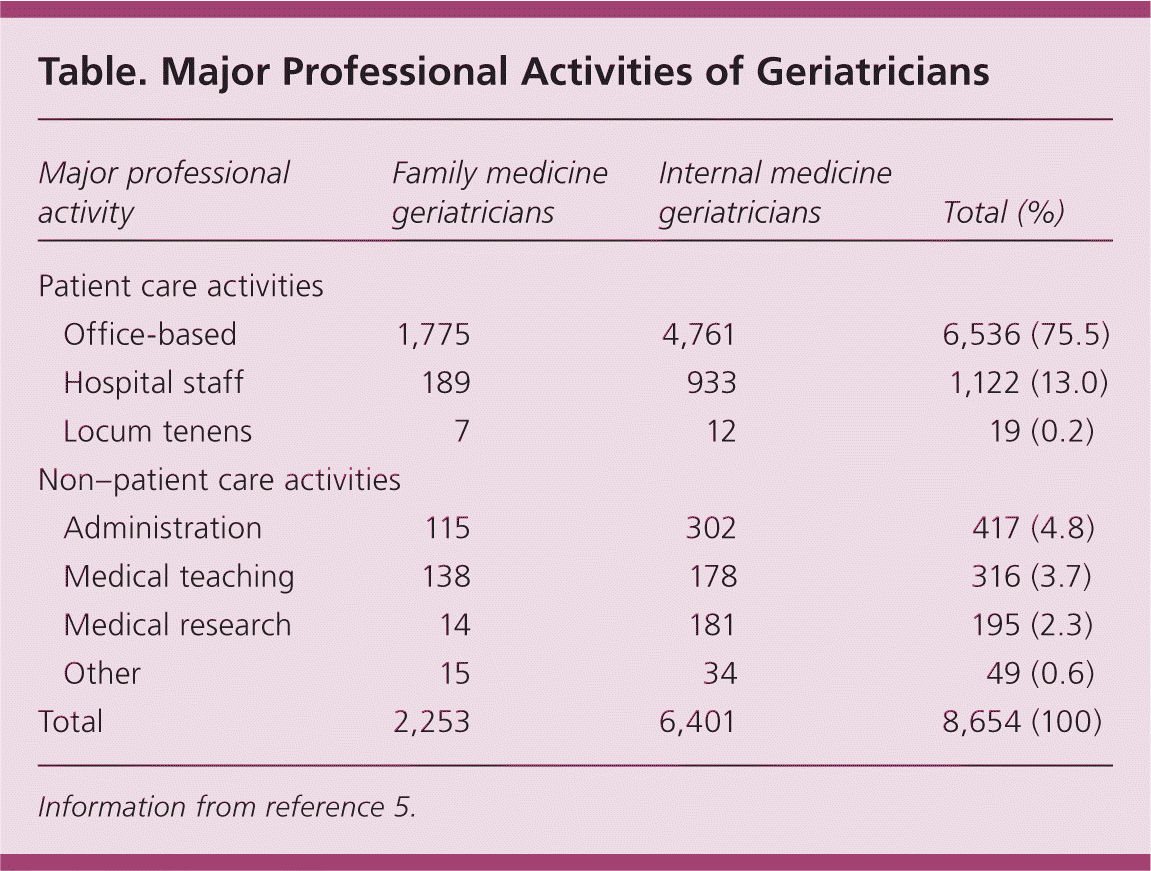
Am Fam Physician. 2012;85(1):59
Author disclosure: No relevant financial affiliations to disclose.
The current number of geriatricians cannot keep up with the health care needs of the growing number of older adults. To fill the gap, more geriatricians should focus on training primary care and other specialty physicians to care for older adults.
Geriatricians, experts in the care of older adults with multiple chronic conditions, are family medicine or internal medicine physicians who complete specialized training in geriatrics. Academic geriatrics leaders believe that geriatricians should maintain focus on direct care for the most complex and vulnerable older patients.1 However, the number of geriatricians is not keeping pace with the rapid growth in the older adult population, leading policy experts to recommend a shift to preparing other physicians for a larger role in geriatrics care.2–4 First, we need to understand how many geriatricians are currently working in these roles.
An analysis of the American Medical Association’s 2010 Masterfile revealed that 8,654 practicing physicians with a primary or secondary specialty are listed as geriatrics (8,137 allopathic and 517 osteopathic).5 Less than 4 percent list medical teaching as their primary activity. Most geriatricians’ major professional activity is related to direct patient care (89 percent; see accompanying table).5 A 2010 survey of allopathic and osteopathic medical schools identified 1,200 geriatric faculty, but they typically spent only one-third of their time teaching.6

| Major professional activity | Family medicine geriatricians | Internal medicine geriatricians | Total (%) | |
|---|---|---|---|---|
| Patient care activities | ||||
| Office-based | 1,775 | 4,761 | 6,536 (75.5) | |
| Hospital staff | 189 | 933 | 1,122 (13.0) | |
| Locum tenens | 7 | 12 | 19 (0.2) | |
| Non–patient care activities | ||||
| Administration | 115 | 302 | 417 (4.8) | |
| Medical teaching | 138 | 178 | 316 (3.7) | |
| Medical research | 14 | 181 | 195 (2.3) | |
| Other | 15 | 34 | 49 (0.6) | |
| Total | 2,253 | 6,401 | 8,654 (100) | |
Geriatrician training programs cannot ramp-up fast enough to meet the needs of the rapidly growing numbers of older adults. It may be more efficient to increase the number of geriatricians who spend most of their time teaching in medical schools and residency training programs, or in cooperative extension models, in order to prepare many more physicians of all specialties to meet the specific needs of a growing older population. This targeted policy option may appeal to federal agencies charged with improving the health and health care experience of the older population, while reducing per capita costs of health care.
